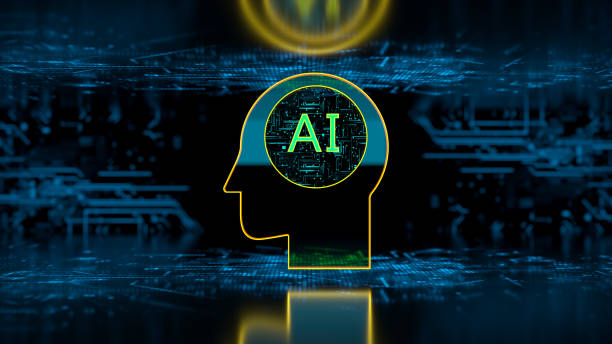What is an Artificial Intelligence Robot? Basic Definitions and Concepts
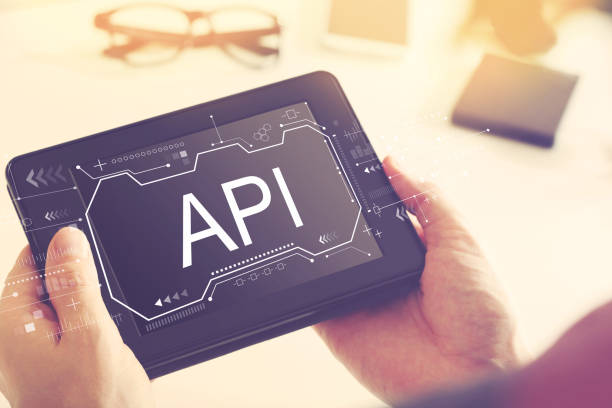
What is an Artificial Intelligence Robot? Basic Definitions and Concepts
#Artificial Intelligence (AI) Robot is a combination of two separate but related fields: robotics and artificial intelligence.
Robotics deals with the design, construction, operation, and application of robots.
Robots are usually machines that are capable of performing a set of automated tasks, especially tasks that are repetitive, dangerous, or difficult for humans.
Artificial intelligence, on the other hand, is a branch of computer science that deals with building machines that can perform tasks that usually require human intelligence, such as learning, problem-solving, pattern recognition, and language comprehension.
Therefore, an artificial intelligence robot is a robot that, using artificial intelligence algorithms and models, is capable of performing more complex and intelligent tasks than traditional robots.
These robots can learn from data, make decisions, and even adapt to new conditions.
The applications of artificial intelligence robots are very broad and include fields such as industry, medicine, customer service, agriculture, and even art and entertainment.
In short, an artificial intelligence robot is an intelligent machine that has the ability to make decisions and perform complex tasks based on data and artificial intelligence algorithms.
Artificial intelligence robots are rapidly developing and advancing today, and they are expected to play a more important role in our daily lives.
Don’t have a company website yet and are missing out on online opportunities? With professional company website design by Rasaweb,
✅ Double the credibility of your business
✅ Attract new customers
⚡ Free consultation for your company website!
Main Components of an Artificial Intelligence Robot
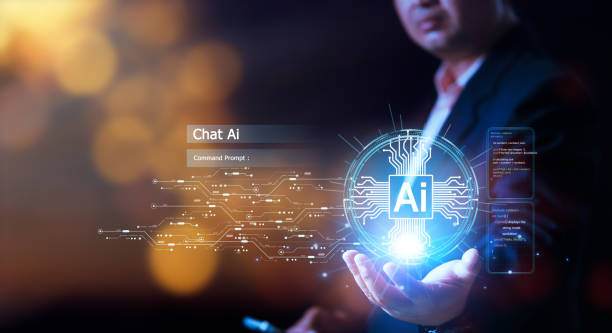
Main Components of an Artificial Intelligence Robot
An #artificial intelligence robot consists of several main components that, working together, enable the performance of intelligent tasks.
These components include:
1.
**Sensors:** These components collect information from the surrounding environment.
Sensors can include cameras, microphones, temperature sensors, pressure sensors, and other similar devices.
The information collected by sensors is used as input for artificial intelligence algorithms.
2.
**Processor:** This section is the brain of the robot and is responsible for processing data and executing artificial intelligence algorithms.
The processor can be a central computer, a microcontroller, or a graphics processing unit (GPU).
3.
**AI Software:** This part includes the algorithms and models of artificial intelligence that enable the robot to learn, make decisions, and solve problems.
This software can include neural networks, machine learning algorithms, and expert systems.
4.
**Actuators:** These components enable the robot to interact with the physical environment.
Actuators can include motors, pistons, and other similar devices.
Actuators convert the commands issued by the processor into physical movement.
5.
**Power Source:** The robot needs a power source for proper functioning.
The power source can include batteries, fuel cells, or a direct connection to electricity.
These components, working together, enable an #artificial intelligence robot to operate in complex and dynamic environments and perform various tasks.
Artificial intelligence robots are constantly advancing, and it is expected that in the near future, we will see more intelligent robots that are capable of performing even more complex tasks.
Types of Artificial Intelligence Robots Based on Application
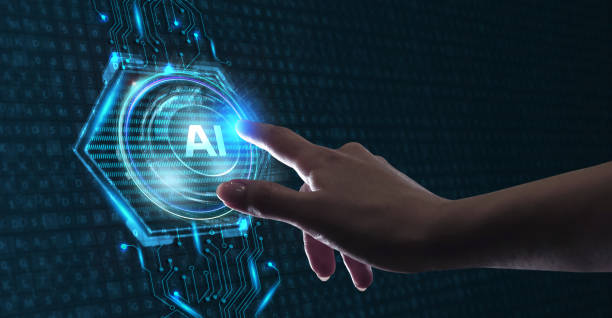
Types of Artificial Intelligence Robots Based on Application
#Artificial intelligence robots are divided into various types based on their different applications.
Some of the most important of these classifications include:
1.
**Industrial Robots:** These robots are used in factory production lines to perform repetitive and heavy tasks.
They can move parts, perform welding, paint, and package.
Industrial robots, using artificial intelligence, can automatically detect defects and optimize the production process.
2.
**Medical Robots:** These robots are used in surgeries, rehabilitation, and patient care.
Surgical robots can perform complex surgeries with high accuracy, while rehabilitation robots help patients regain their movements.
Care robots can also help the elderly and disabled with daily tasks.
3.
**Service Robots:** These robots are used in restaurants, hotels, and stores to provide services to customers.
They can take orders, serve food, clean rooms, and deliver products to customers.
Service robots, using artificial intelligence, can anticipate customer needs and provide personalized services.
4.
**Agricultural Robots:** These robots are used in farms and orchards to perform tasks such as planting, tending, and harvesting crops.
Agricultural robots, using artificial intelligence, can detect pests and diseases and automatically spray pesticides.
They can also determine the amount of water and fertilizer needed by plants, thereby optimizing the consumption of resources.
5.
**Military Robots:** These robots are used in military operations to perform tasks such as reconnaissance, bomb disposal, and transportation of equipment.
Military robots can operate in dangerous and inaccessible conditions for humans, thereby saving the lives of soldiers.
6.
**Personal AI Robots:** These robots are used in homes to help people with daily tasks, such as cleaning, cooking, and childcare.
They can use artificial intelligence to learn people’s habits and preferences and provide personalized services.
These classifications are just examples of the types of artificial intelligence robots, and with the advancement of technology, it is expected that we will see the emergence of new types of these robots with more diverse applications.
| Robot Type | Application |
|---|---|
| Industrial | Production lines, moving parts |
| Medical | Surgery, rehabilitation |
| Service | Restaurants, hotels |
| Agricultural | Planting, tending, harvesting |
Advantages and Disadvantages of Using Artificial Intelligence Robots
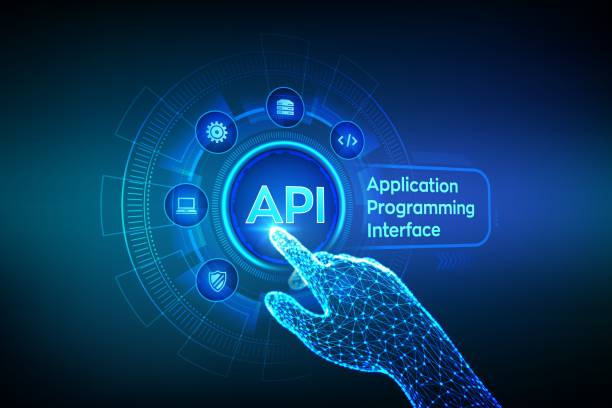
Advantages and Disadvantages of Using Artificial Intelligence Robots
The use of #artificial intelligence robots has many advantages, but along with it, there are also disadvantages that should be considered.
**Advantages:**
- **Increased Productivity:** Robots can work without fatigue and interruption, which leads to a significant increase in productivity.
- **High Accuracy:** Robots can perform tasks with much higher accuracy than humans, which leads to reduced errors and improved quality.
- **Reduced Costs:** By replacing human labor with robots, costs related to wages, insurance, and training can be reduced.
- **Greater Safety:** Robots can work in dangerous and inaccessible environments for humans, which leads to a reduction in life and financial risks.
- **Performing Repetitive Tasks:** Robots can automatically perform repetitive and tedious tasks, which allows human labor to focus on more creative and important tasks.
**Disadvantages:**
- **High Initial Cost:** Buying and setting up robots can be very expensive.
- **Need for Expertise:** For the maintenance and repair of robots, there is a need for trained and specialized personnel.
- **Job Loss:** Replacing human labor with robots can lead to the loss of some jobs.
- **Ethical Concerns:** The use of robots in some areas, such as military and security, can create ethical concerns.
- **Dependence on Technology:** Over-reliance on robots can create vulnerability to power outages, cyberattacks, and other technical problems.
In general, the use of #artificial intelligence robots can have many benefits for businesses and society, but its disadvantages should also be considered, and plans should be made to reduce its negative effects.
The rapid advancement of #artificial_intelligence and robotics makes it possible to produce smarter robots with more capabilities and at a lower cost.
Does your current online store design cause you to lose customers and sales?
Rasaweb is your solution with modern and user-friendly online store designs!
✅ Significant increase in conversion rates and sales
✅ Create strong branding and gain customer trust
⚡ Get a free online store design consultation from Rasaweb!
Challenges Facing the Development of Artificial Intelligence Robots
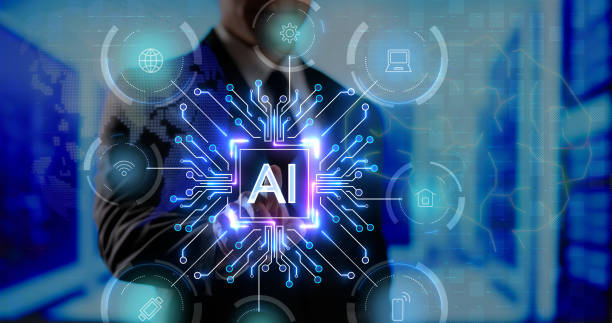
Challenges Facing the Development of Artificial Intelligence Robots
The development of #artificial intelligence robots faces numerous challenges that must be overcome to advance this technology.
Some of these challenges include:
1.
**Data Scarcity:** Artificial intelligence algorithms need a lot of data to learn and improve their performance.
Collecting and labeling this data can be time-consuming and costly.
2.
**Ethical Problems:** The use of robots in some areas, such as medical and judicial decision-making, can create complex ethical issues.
3.
**Cybersecurity:** Robots are vulnerable to cyberattacks, and hacking them can lead to serious damage.
4.
**High Cost:** The development and maintenance of advanced robots is very expensive.
5.
**Technical Limitations:** There are still many technical limitations in the field of artificial intelligence and robotics that prevent the construction of smarter and more capable robots.
6.
**Social Acceptance:** Some people are resistant to the use of robots in their daily lives.
7.
**Standards and Regulations:** The lack of specific standards and regulations for the development and use of robots can cause legal and safety problems.
To overcome these challenges, there is a need for cooperation between researchers, industrialists, policymakers, and society.
With joint efforts, #artificial intelligence robots can be transformed into a useful and safe technology for everyone.
One of the main challenges in this area is the development of artificial intelligence algorithms that can solve complex problems independently and without the need for human supervision.
Impact of Artificial Intelligence Robots on Future Jobs

Impact of Artificial Intelligence Robots on Future Jobs
#Artificial intelligence robots will have a significant impact on future jobs.
While some jobs may disappear completely, new jobs will also be created.
**Jobs at risk:**
- Repetitive and routine jobs such as telephone operators, production line workers, and accountants
- Jobs that require physical skills such as truck drivers, construction workers, and farmers
**Jobs for which demand will increase:**
- Artificial intelligence and machine learning specialists
- Robotics engineers
- Data analysts
- Cybersecurity specialists
- Education specialists
- Healthcare specialists
In order for people to be successful in the future labor market, they must learn new skills and adapt to technological changes.
These skills include:
- Critical thinking and problem-solving skills
- Creativity and innovation skills
- Communication and collaboration skills
- Digital literacy skills
- Continuous learning skills
Governments and educational organizations also have an important role to play in preparing the workforce for the future.
They must design new educational programs that help people learn the skills needed for future jobs.
They should also provide lifelong learning opportunities for everyone so that they can keep their skills up to date throughout their lives.
#Artificial intelligence robots will play a significant role in advancing sustainable development goals.
| Jobs at Risk | Jobs with Increasing Demand |
|---|---|
| Telephone Operators | Artificial Intelligence Specialists |
| Production Line Workers | Robotics Engineers |
| Accountants | Data Analysts |
| Truck Drivers | Cybersecurity Specialists |
Impact of Artificial Intelligence Robots on Daily Life
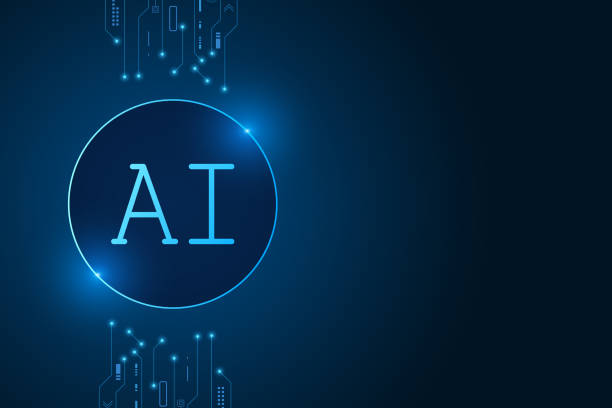
Impact of Artificial Intelligence Robots on Daily Life
#Artificial intelligence robots are increasingly infiltrating our daily lives, having widespread effects on various aspects of it.
From smart homes to self-driving cars, robots and artificial intelligence systems are helping us do things easier, faster, and more efficiently.
In homes, intelligent robots can perform tasks such as cleaning, cooking, and childcare.
Smart systems can control home temperature, lighting, and security.
Smart appliances can communicate with each other and adjust automatically.
In transportation, self-driving cars can take us to our destination without the need to drive.
Smart systems can manage traffic and prevent accidents.
Robots can deliver goods and improve logistics services.
In healthcare, robots can perform complex surgeries and help patients in rehabilitation.
Smart systems can diagnose diseases and provide personalized treatments.
Robots can take care of the elderly and disabled.
In education, smart systems can provide personalized education and help students learn.
Robots can serve as teaching assistants in classrooms.
In entertainment, robots can play games, play music, and make movies.
Smart systems can provide personalized content and help us find new things.
These are all examples of applications of artificial intelligence robots.
Of course, the use of #artificial intelligence robots in daily life also faces challenges.
These challenges include security, privacy, and ethical issues.
To be able to fully benefit from the advantages of this technology, we must seriously consider these challenges.
Artificial intelligence will be everywhere.
The Future of Artificial Intelligence Robots: Prospects and Possibilities

The Future of Artificial Intelligence Robots: Prospects and Possibilities
The future of #artificial intelligence robots is very bright and full of possibilities.
With the rapid advancement of technology, it is expected that robots and artificial intelligence systems will play a more important role in all aspects of our lives.
Some of the future prospects for #artificial intelligence robots include:
- Smarter and more capable robots that are able to perform more complex tasks.
- Robots that interact with humans more naturally and effectively.
- Artificial intelligence systems that are able to learn and adapt to new environments.
- Robots that are used in new fields such as space exploration, scientific research, and crisis management.
- Artificial general intelligence (AGI) that is capable of doing anything that a human can do.
However, the development of #artificial intelligence robots also faces risks that must be taken seriously.
These risks include:
- Job Loss
- Increasing Inequality
- Security Risks
- Ethical Issues
- Existential Risks
To be able to benefit from the advantages of #artificial intelligence robots and prevent its risks, we must develop this technology responsibly and consciously.
This requires cooperation between researchers, industrialists, policymakers, and society.
Artificial intelligence will have a huge impact in the future.
Robots are changing our lives.
In general, the future of #artificial intelligence robots is very exciting and has the potential to dramatically improve our lives.
However, we must also be aware of its risks and plan to manage them.
Are you losing potential customers due to an unprofessional website? Rasaweb is the answer! With our specialized company website design services:
✅ Enhance the credibility and position of your business
✅ Experience attracting more targeted customers
⚡ Act now to receive a free consultation!
Ethical Considerations in the Design and Use of Artificial Intelligence Robots
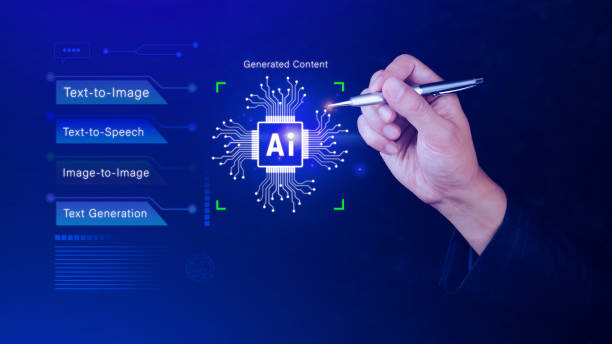
Ethical Considerations in the Design and Use of Artificial Intelligence Robots
The design and use of #artificial intelligence robots are accompanied by important ethical considerations that must be carefully examined.
As this technology increasingly infiltrates our lives, it is essential to ensure that it is developed and used responsibly and in accordance with ethical principles.
Some of the most important ethical considerations in this area include:
- **Transparency and Accountability:** It should be clear how an artificial intelligence robot makes decisions and who is responsible for its decisions.
- **Privacy:** Personal data of individuals should be protected and its misuse should be prevented.
- **Fairness and Impartiality:** It should be ensured that artificial intelligence robots do not discriminate in their decision-making.
- **Safety:** It should be ensured that artificial intelligence robots are safe for humans and the environment.
- **Responsibility:** It should be determined who is responsible for damages caused by the performance of artificial intelligence robots.
- **Respect for Human Rights:** It should be ensured that artificial intelligence robots do not violate human rights.
To comply with these ethical considerations, it is necessary to develop a set of ethical principles and guidelines for the design and use of #artificial intelligence robots.
Also, mechanisms for monitoring and implementing these principles should be created.
#Artificial intelligence robots should serve the public interest and contribute to the welfare of society.
Artificial intelligence should be ethical.
Key Tips for Learning and Entering the Field of Artificial Intelligence Robots
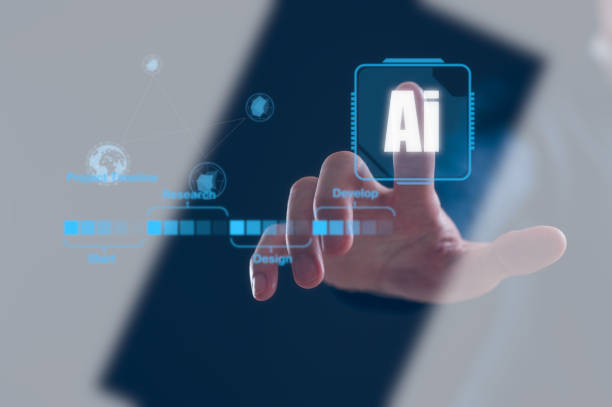
Key Tips for Learning and Entering the Field of Artificial Intelligence Robots
If you are interested in learning and entering the field of #artificial intelligence robots, there are a few key tips that can help you:
- **Strong Math Foundation:** Artificial intelligence and robotics are based on mathematics.
Therefore, having a strong foundation in mathematics, especially linear algebra, calculus, and statistics, is essential. - **Programming Proficiency:** Programming is one of the main tools for developing artificial intelligence robots.
Proficiency in programming languages such as Python, C++, and Java is essential. - **Familiarity with Artificial Intelligence Algorithms:** To develop artificial intelligence robots, you should be familiar with various artificial intelligence algorithms such as neural networks, machine learning algorithms, and optimization algorithms.
- **Familiarity with Robotics:** To work with robots, you should be familiar with the principles of robotics, such as robot design, robot control, and robot sensors.
- **Continuous Learning:** The field of artificial intelligence and robotics is rapidly advancing.
Therefore, to be successful in this field, you must constantly keep your knowledge up to date. - **Practical Practice:** The best way to learn artificial intelligence and robotics is through practical practice.
Try to do practical projects and face real challenges. - **Networking:** Connect with other people in the field of artificial intelligence and robotics and learn from their experiences.
- **Patience and Perseverance:** Learning artificial intelligence and robotics is time-consuming and difficult.
To succeed in this field, you must have patience and perseverance.
By following these tips, you can progress more effectively in the field of #artificial intelligence robots and become a successful expert.
FAQ
| Row | Question | Answer |
|---|---|---|
| 1 | What is an artificial intelligence robot? | An artificial intelligence robot is a machine capable of understanding, reasoning, learning, and solving problems, and can perform complex tasks with relative autonomy. |
| 2 | What are the most important applications of artificial intelligence robots? | The main applications include industrial production, customer service (chatbots), medicine and surgery, self-driving transportation, space exploration, and military affairs. |
| 3 | What is the main difference between an artificial intelligence robot and a regular robot? | A regular robot only follows programmed instructions, while an artificial intelligence robot can learn from data, make decisions, and adapt to new environments. |
| 4 | How do artificial intelligence robots learn? | They identify patterns and improve their performance through machine learning algorithms (such as deep learning, reinforcement learning) and processing vast amounts of data. |
| 5 | Can artificial intelligence robots have emotions? | Currently, artificial intelligence robots do not have real emotions in the human sense. They can imitate or detect emotions, but they do not have an understanding and experience of them. |
| 6 | What are the current limitations of artificial intelligence robots? | Limitations include the need for a lot of data, the inability to understand abstract concepts, the lack of real creativity, ethical issues, and challenges in generalizing in new environments. |
| 7 | What is the role of artificial intelligence in the development of humanoid robots? | Artificial intelligence helps humanoid robots walk, maintain balance, understand the surrounding environment, interact with humans, and perform complex tasks. |
| 8 | How is the future of artificial intelligence robots predicted? | It is predicted that artificial intelligence robots will become smarter, more autonomous, and capable of performing more complex tasks in daily life and industry, and their interaction with humans will increase. |
| 9 | Can artificial intelligence robots replace all human jobs? | It is unlikely that all human jobs will be replaced. Robots take on many repetitive and dangerous tasks, but jobs that require creativity, empathy, and ethical judgment will remain. |
| 10 | What ethical and social challenges are raised by the expansion of artificial intelligence robots? | Challenges include issues related to privacy, data security, ethical decision-making by robots, impact on employment, and accountability in case of errors. |
And other services of Rasa Web Advertising Agency in the field of advertising
Intelligent Marketing Automation: A professional solution to increase website traffic by focusing on customizing the user experience.
Intelligent Conversion Rate Optimization: A new service to increase sales by managing Google Ads.
Intelligent Conversion Rate Optimization: A fast and efficient solution for online growth by focusing on Google Ads management.
Intelligent Data Analysis: A combination of creativity and technology for online growth through the use of real data.
Intelligent Conversion Rate Optimization: Designed for businesses looking to manage campaigns through the use of real data.
And more than hundreds of other services in the field of internet advertising, advertising consulting, and organizational solutions
Internet Advertising | Advertising Strategy | Advertorial
Resources
Applications of Intelligent Robots and Their Function in Modern Life
,Advantages of Artificial Intelligence in Marketing
,What are Intelligent Robots?
,Development of Artificial Intelligence Applications in Iran
? Transform your business in the digital world and achieve your big goals with Rasaweb Digital Marketing Agency. We pave the way for your success by providing services such as professional website design, SEO, and content marketing.
📍 Tehran, Mirdamad Street, next to the Central Bank, South Kazerun Alley, Ramin Alley No. 6

